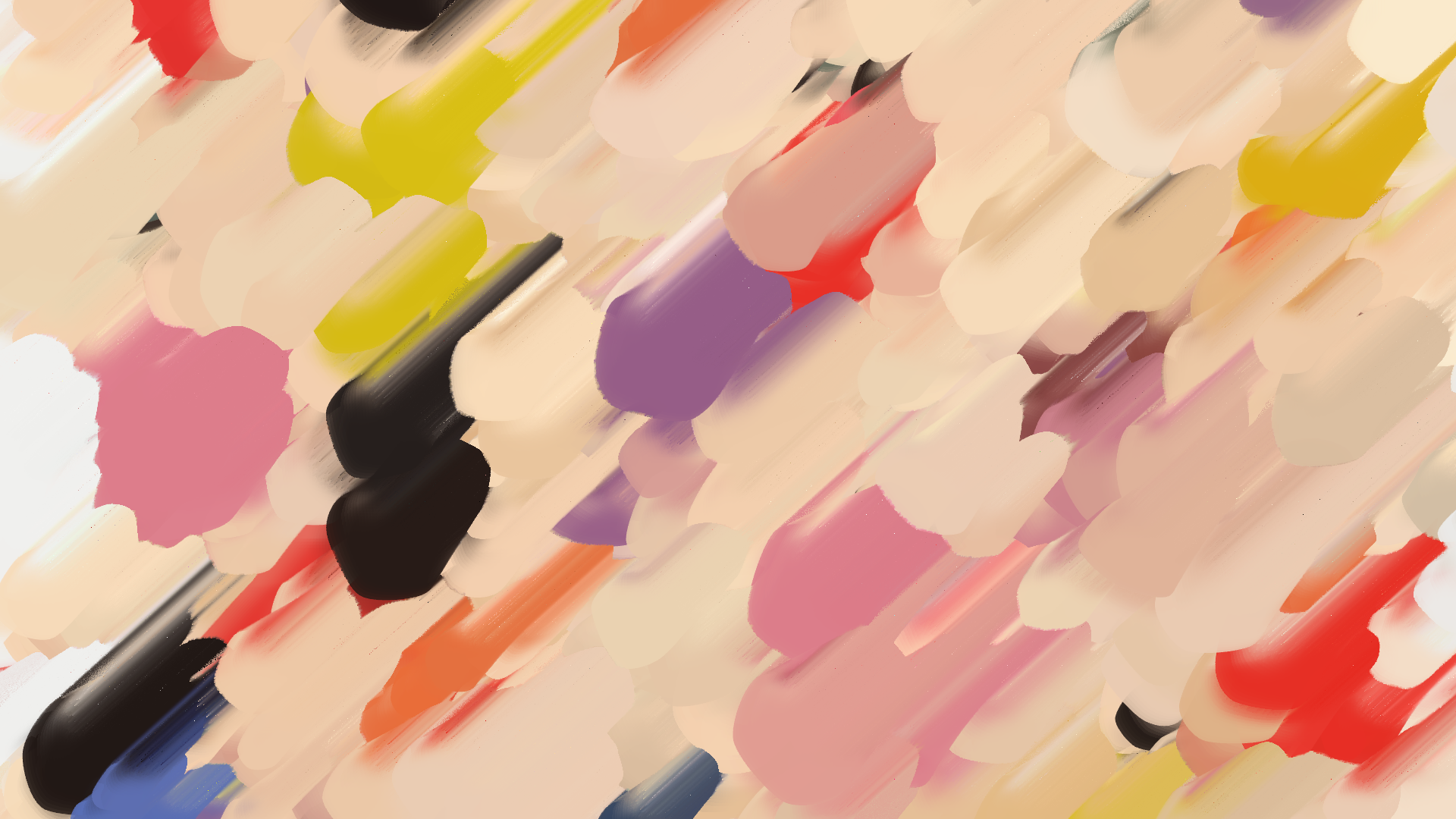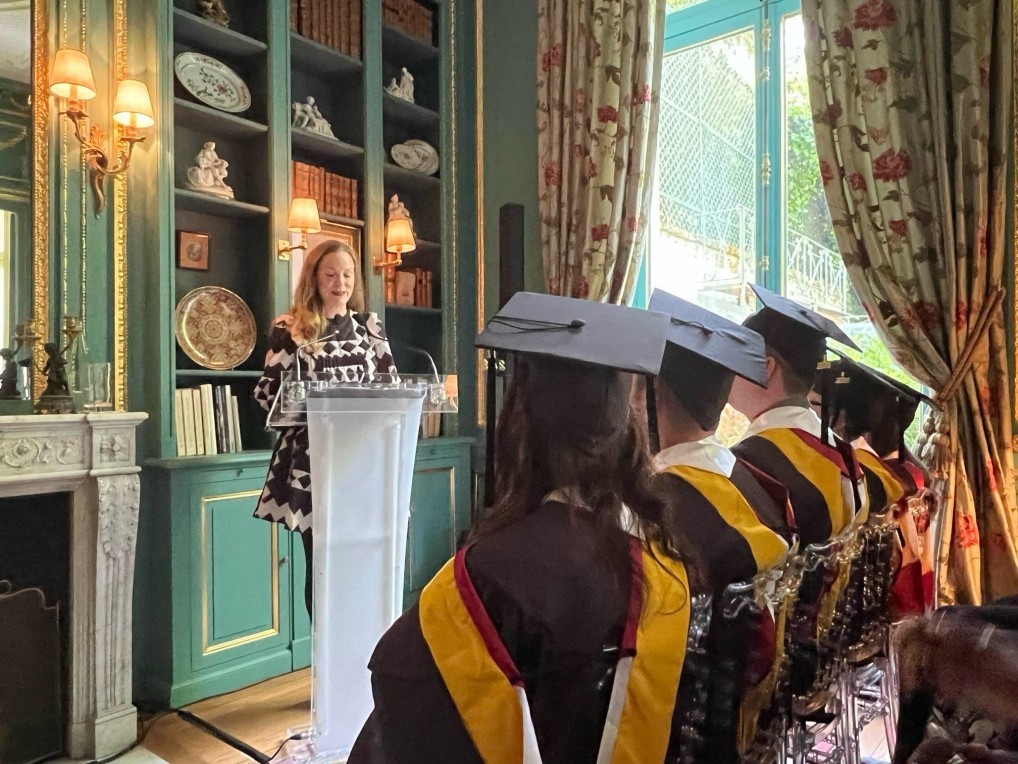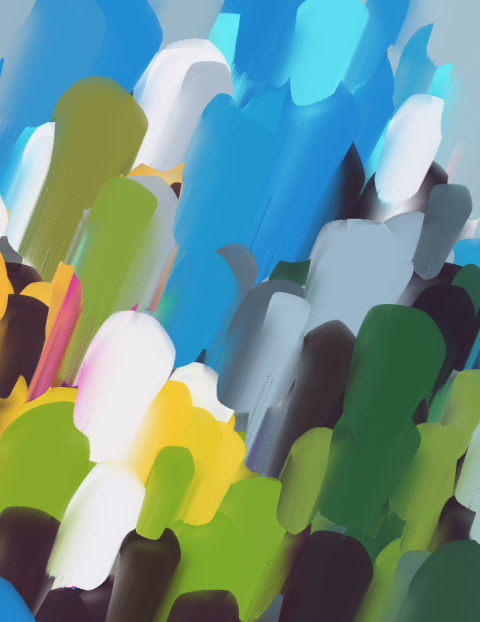Strategic Design for Global Leadership Program

10 May 2024
Parsons Paris | The New School
Strategic Design for Global Leadership
“GEMS” (Global Executive Masters Students)

My name’s Lisa Baird. It’s an honor to be here. But who am I? Who is Lisa Baird? Why am I worthy of telling you anything at all? I think it has something to do with tension, like the tension between donkeys and zebras. Stick with me here.
When I was 20, I wanted to be on the cover of BusinessWeek. I still remember the specific BusinessWeek cover—it was Hank Paulson, the CEO of Goldman Sachs. It must’ve been around ‘99 or 2000. I thought, “I want to be like this guy. I want to be a business leader, a titan of industry.” I was a double-major in finance and journalism because I thought if for any reason I couldn’t become the CEO of Goldman Sachs, I’d at least be a Wall Street Journal reporter or a finance writer like Michael Lewis, the author of Liar’s Poker.
So I earned my two undergrad degrees and wound up at JPMorgan in New York—an investment banking analyst in the bond department. Instead of writing books like Liar’s Poker, I was living the book Liar’s Poker—in real life. I felt I had wedged my way into the secret room where the ladder I sought to climb began.
But I was a horrible investment banker. It was too distilled. I didn’t have the stomach for it, or Manhattan either. So I moved into corporate strategy on the client side and was happy there for seven years. I rose all the way to ‘chief-of-staff to the CFO’ of a $20-billion organization. The new goal was to inherit my boss’s job or one like it : to become a CFO. I must’ve been 30 or 31.
But I lacked an MBA, and in finance, I knew that was more or less the last hurdle to clear.
So there I was at the University of California–Berkeley, getting my MBA. One day my friend Jessica said, “Come to my class on Wednesday night, I think you’ll like the guest speaker.” I said to her, “Jessica, I don’t even want to go to my own classes, let alone yours.” But I went. The guest speaker was Jocelyn Wyatt, the founder of IDEO.org, herself a former business designer from IDEO.
I had never heard of IDEO. The word, the name meant nothing to me. Jocelyn and her colleague Marika proceeded to put on not so much a guest lecture but a rapid prototyping session—again, words that at the time meant nothing to me. There was glue and paper; markers, scissors, pipe cleaners; and of course Post-Its. By the end of two hours, I had created a little rough sample of something that addressed real human needs rooted in empathy for the challenges they faced. Compared to my life in finance and corporate strategy, it was so refreshing, different, visceral, creative. I walked out of there that night in a kind of dream state.
So the next day I wrote Jocelyn an email—just a little note to say thanks for opening my eyes to a new way of looking at the world. She wrote back immediately, and a month or two later, I found myself sitting on a little old pier in the San Francisco Bay, interning at IDEO. I still had no idea who IDEO really was. One thing led to another, and in the end, I became a full-time business designer at IDEO, working every day on that pier.
Suffice it to say, this was the beginning of a life of tension. Tension between business and design, logic and feeling, facts and intuition, reason and creativity, strategy and art—the rational and the emotional.
I’ll never forget one day at IDEO my design director saying to me, “Look, we business designers—we will always be like donkeys running with zebras.” She was telling me that in the world of design, at least inside the walls of IDEO, we strategists were second-class citizens. We didn’t have degrees from art schools; we couldn’t draw Bezier curves. We designed things, but not the right things.
I remember looking at her and silently thinking: “Mais non—how is it not obvious to you? Business designers will inherit design. Business designers will inherit the earth.” I literally thought those words.
And that’s why I think Melissa and Marianna invited me here to speak to you. I think I’m standing up here to tell you what I saw on the horizon that day, and what I still see out there in the future, and all around me. Business and design have converged. Because everything has converged. And worthy are those who have seen it or felt it—somewhere in the back of their minds or deep in their bones. The problems we have in the world around us are not divided into clean disciplines, and neither will be their solving.
I went back to school one last time, to earn a master of design at California College of the Arts. That’s where I got the last few things that business school could never give me : an understanding of form, crit, and design theory. That experience enabled me to go independent in 2015.
Today, I run a design consultancy in Paris called Fraîche Design Thinking. We specialize in product innovation, brand expression, corporate strategy, and architectural design. My current clients are the World Health Organization Foundation in Geneva, and the Eames Institute in Petaluma, California, which is dedicated to sharing the archives and methods of the famous mid-century designers Charles & Ray Eames.
My IDEO years—plus another nine of doing this work independently—has enabled me to confirm what I think I always knew : business is design; and design is business.
How can this be so? The great disciplines like art, science, technology, the humanities, are like big beautiful buildings— sometimes sharing a wall, some with their windows open—and design—strategic design in particular—is the collection of streets, roads, and grand boulevards running between and among them. It isn’t so much a discipline resting inside its own grande maison as it is the blood-flow carrying insights and lifeblood between them. Business is a bit like this, as well.
You know what this means right? It means unlike a beautiful Haussmann building, design is always in motion. It does not stand in one place because it was never strictly about places or things or conceptual destinations. Strategic design is a kind of pollinator bee with a crucial role to play in a far greater ecology. To be in strategic design means you’re always moving—you’re always on the road.
Why is this interesting? Why is this needed in the world—now more than ever?
Well for one thing, the only thing constant is change, and when the world is changing so much and so often, the grand institutions and disciplines are forced to talk to each other more than ever, are forced to make deals with one another, to collaborate, to corroborate, to enact treaties—so naturally the pollinator couriers running between then become more crucial than ever.
You may have noticed the world today is almost unrecognizable from the one we lived in just ten years ago. The technology is different. Business models are different. Industries are different. Geopolitical relations are different. And indeed the climate is different.
Ten or fifteen years ago, everything was different. We are witnessing compounding evolutions all around us, many of which emanate from the same center of the same particular onion. Most of the things we are witnessing are eruptions of late-stage capitalism, which is scary to think about.
But there is hope. Political economies have a way of self-correcting because they are organisms of a kind. They are human and made of humans—and nobody knows humans like design. And nobody knows design like strategic design. So I’ll share with you five signals from the future that give me optimism.
First—I see a return to deep humanism. Fake work has always existed, but a difference in scale is a difference in principle, and generative A.I. is changing the ratio. Whereas we used to have pretty decent odds of receiving messages that had passed through human minds, hearts, and hands, these man-made messages have been overwhelmed by their statistical facsimiles. The upside is that real human messages are suddenly becoming more rare, and nobody knows better than an economically-aware strategist that ‘scarcity creates value.’ So I see human-made coming en vogue as its scarcity only grows, by no particular effort of its own. There’s a perverse kind of magic in that.
Second—I see a return to mechanics and mechanical things. We miss tactile things, not necessarily because of nostalgia, but because they were often simpler, easier, more fun, and had fewer fail points. We could do things without looking down all the time. We could receive messages through touch and true haptic mechanics instead of only our eyes. This kept us safer because it kept us more aware—literally and metaphorically. There was a girl who nearly suffocated in her Tesla recently because she initiated a software update while seated inside her car on a warm day. She wasn’t sure how to open the car door mechanically from the inside—you know, with a handle—so she waited 40 minutes in a hot glass box. There was an Apple ad released four days ago that has the design community shook—because it literally crushed everything analog we hold dear.
Third—I see a return to small-scale connectedness. There are a few silver linings of COVID-19. One good thing is the notion of communing more deeply in smaller social pods. Just a little group of six or seven people, maybe nine or ten. It’s enough. This is not to say we become closed off. It simply means we distribute most of our time across fewer people, which of course means each person gets more of you. And you get more of them. When this kind of proportionality exists—when everyone’s slice of the pie is bigger—deeper things are possible. Things like trust. You can rely on each other for more—economic, social, emotional. It turns out social media was pointless.
Fourth—I see a return to satisficing. Satisficing is a term from the field of organizational psychology. It means meeting the minimum requirement necessary to achieve a goal—finding the thing that will suffice, then stopping. It’s more or less the opposite of consumerism. It’s basically degrowth. Before the pandemic, Western society was starting to turn away from the accumulation of physical objects. The lockdowns reversed this when we were stuck indoors with nothing to do but shop online. But I think satisficing will return as it becomes clear to more and more people that we simply need to want a planet to live on more than we want objects—and that our appetite for material goods has been more or less unrelated to need.
Finally—I see a return to collectivism. Rugged individualism is romantic but soon will have run its course. It simply isn’t practical in a world where most people need help. Help might mean economic participation in some places; or literal climate displacement in others. Decades ago, capitalism probably included healthier doses of guardrailing and democratic action than the version we see today. The government did more refereeing; the citizenry did more decision-making. But these roles got lost and left us with extreme economic inequality. The only upside to widespread inequality and a subproletariat is that it engenders a certain kind of community-level, grassroots cooperation—just ask 1789 France!—which is to say: don’t be surprised by revolution.
So what can I tell you about how to prepare for this world of constant change? The best thing I can do is to let you know that you are part of it. You will change, too—and you must let yourself.
You must embrace a life of fluidity—an evolution that never ends. How does one stay fluid and limber across a lifetime of strategy and design? Mostly by saying yes to things.
So I’m going to give you five small tips on how to say yes. These five things are skills, and I hope they will inform you at every fork in the road—or fourchette de la rue—that you will undoubtedly encounter:
Wonder about things. Decide that you will spend your life figuring out how the world works—just decide right now, today.
Create a little bit of chaos. Ceteris paribus and given the choice, do the more nebulous thing—let surprises back into your life.
Cross stuff off lists. Every big thing is a bunch of small things—often in pencil right underneath ‘pick up the dry cleaning.’
Loosen your grip. Develop a willingness to be led. People know things—imagine what they might show you if you let them.
Forget about things. Short-term memory can be pretty handy—shake things off and move on just like everybody else already has.
Now, to help you remember to say yes—as often and as fervently as you can—I wrote you all a little poem. This one's just for you:
If you’ve got a background in health and patient supports,
And you prefer ‘how might we’ questions over writing reports,
If perfume is the thing over which you obsess,
Just promise yourself that you’ll always say yes.
.
If you’ve been cutting your teeth in creative ops,
And impact investing’s your next set of chops,
If inclusivity is a point that you’d like to stress,
Just promise yourself that you’ll always say yes.
.
If journey design gets you going each day,
And research is something you won’t let go away,
If cycling’s a sport that you’d like to finesse,
Just promise yourself that you’ll always say yes.
.
If you like insights perhaps on a wide, global scale,
And climb mountains through rain—snow, sleet, or hail,
If design thinking is clutch to your future success,
Just promise yourself that you’ll always say yes.
.
If the built environment calls you each day at dawn,
And you’ve formed a strong team over which you may fawn,
If the Windy City is your future address,
Just promise yourself that you’ll always say yes.
.
If Swiss Army Knife is a name you’ve been called,
And complex strategy riddles leave you enthralled,
If devoted dog mom is something to which you confess,
Just promise yourself that you’ll always say yes.
.
If the public-private space really fills your cup,
And a sexy new zine gets you all fired up,
If poli-sci and design are on your board of chess,
Just promise yourself that you’ll always say yes.
.
If Excel is a place that you often call home,
And you have a not-so-quiet friend and a new children’s tome,
If through solar you helped many people progress,
Just promise yourself that you’ll always say yes.
.
If luxury events are what you’re known for,
And Caribbean business, with you, could do more,
If a love for Walt Disney you’d like to express,
Just promise yourself that you’ll always say yes.
.
Remember this group and these days that you’ve had,
As the world morphs around you in ways good and bad,
Strategic design was no random guess,
It’s a way to be in the world—and to always say yes.

